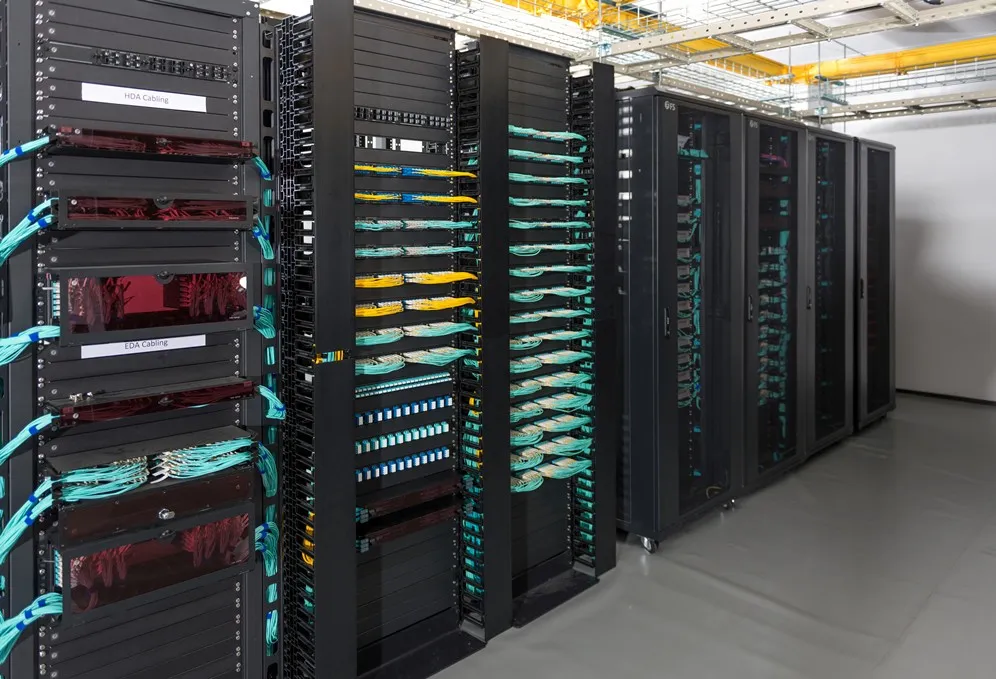A data center is an indispensable attribute of a digital world. Large server systems are located in data centers. They are responsible for generating large capacities and computing complicated tasks within a short period. Server systems include hundreds or even thousands of components. Serves, switches, patch panels, cords, and many other active hardware and accessories make up a network system. This is a huge amount of equipment. In order to accommodate and store all items compactly and allocate devices efficiently, server racks are used.
Server racks are specialized metal constructions designed for computing equipment storage. The modern market offers a wide diversity of models of different layouts, sizes, and for various tasks.
Benefits of Racks

Furniture pieces differ according to the type of installation, size, designs, and portability. However, all models are beneficial due to the following criteria:
- Organization and equipment allocation. Server racks are multi-layer constructions with specialized holes, slots, and mounting rails. Server bodies are equipped with all the needed accessories to attach devices and reliably store them on shelves.
- 100% security of hardware. Solid enclosures made of durable metal sheets guarantee protection against all sorts of negative impacts, including environmental factors (water, sunlight, UV rays, moisture, dust, and other pollutants), unintentional shocks, and unauthorized access by non-related people.
- Perfect cooling. The enclosures are equipped with all the required functional holes for fan installation, sensors mounting, etc. Doors and sidewalls are usually perforated. Thus, telecommunication equipment is properly cooled. If a cooling strategy is chosen incorrectly, hardware will overheat.
Data cabinet layout planning is crucial since furniture is rather expensive. If its size is selected improperly, this will lead to even more expenses. Other consequences of incorrect choice include equipment overheating, malfunction, improper allocation, etc.
If you need a floor-standing or wall-mount server cabinet, you can find it here on the website.
Rack Dimensions
This is one of the key parameters for the right selection. Models of server racks are measured in three dimensions, i.e. depth, width, and height.
Depth varies depending on the equipment to be stored. Several depth parameters are most common. These are 600, 800, 900, and up to 1200 mm.
Width is determined by the width of network hardware. Cabinets must be wide enough to allow system administrators to put servers and other active equipment inside them. 19-inch cabinets are the most common. Models of 10 and 23 inches also have their success on the modern market.
Height is the most complicated dimension since it requires making calculations. It is measured in U (units), where 1U is 1,75 inches. Thus, when you see 4U in the name of the rack model, it stands for height. To calculate the required height you should add the heights of your equipment.
8 Essential Questions to Solve at the Stage of Planning Server Rack Installation
Make sure to consider the below-listed issues to find the best place for deployment of your network system:
1. Rack dimensions

When calculating the needed size, keep in mind that you’ll likely need to enlarge your system in the future. Thus, foresee this point and leave enough extra space. System administrators usually leave no less than 30% of the cabinet space for future rearrangements and air circulation.
2. Location
Pay due attention to choosing an appropriate premise for a data center. No plumbing systems or other facilities should go through a room. It is advisable to avoid premises with windows.
Also, check whether the room needs a fire suppression system or if it is already installed.
3. Cooling and ventilation
System administrators must provide sufficient cooling inside both the room and the cabinet. Heating is a primary problem of server systems. Proper functioning fans and forced ventilation systems allow the air to circulate through devices and cool them, maintaining the required environment.
4. Rack layout

It is advisable to make a network cabinet layout to visualize how hardware will be placed inside the enclosure. Make sure to place equipment loosely to avoid prevent overheating. A too high density of hardware will result in its overheating.
5. Cable layout
Hundreds of wires are used to connect the system to a PDU, power all units, and interconnect components with each other. But, when it comes to maintenance, the staff can spend lots of time searching for the needed cable, which prolongs system downtime.
Thus, proper cable management is an essential point for convenient and quick maintenance. Cable labeling, coloring, and using accessories (hooks, ties, boxes) are applied to keep wires in order and prevent tangling.
6. Electrical power
Make sure that in the event of an emergency power off, UPS backup power protection will switch on, and the system will continue working without loss of datum.
7. Temperature monitoring

Computing equipment is sensitive to all sorts of changes in the environment. Thus, it is important to maintain stable and optimal conditions on the premises. The installation of sensors will help monitor the temperature and humidity inside cabinets and rooms.
8. Security
To secure a data center cabinet layout and prevent unauthorized access, use locking systems, fingerprint access, or other security technologies to limit and control the circle of employees who can enter server rooms.
Planning the server cabinet layout is crucial and requires particular attention. Note that this is not the issue where it is reasonable to save money. It is better to approach the selection process responsibly and find an appropriate model that will satisfy your needs for many years ahead.







